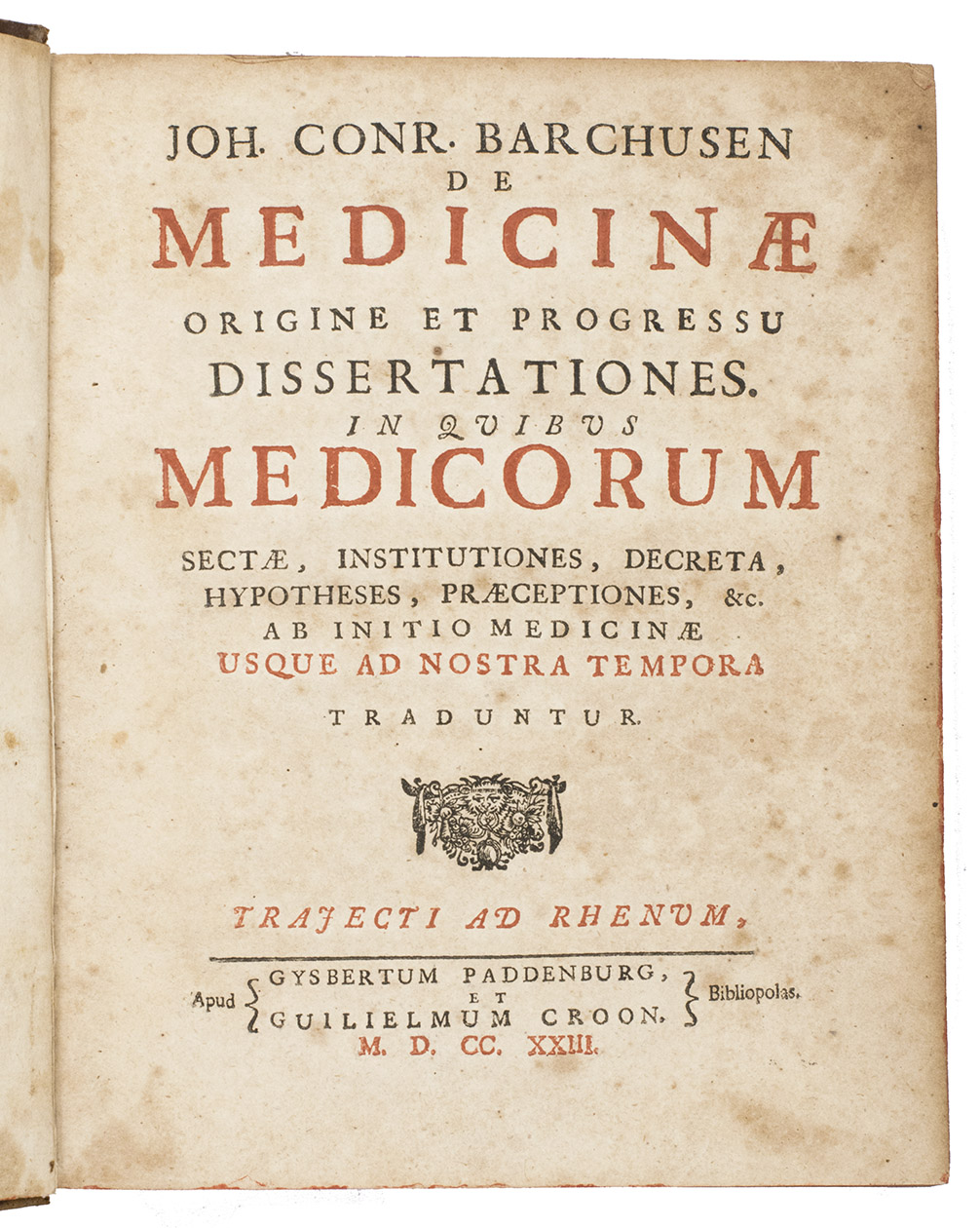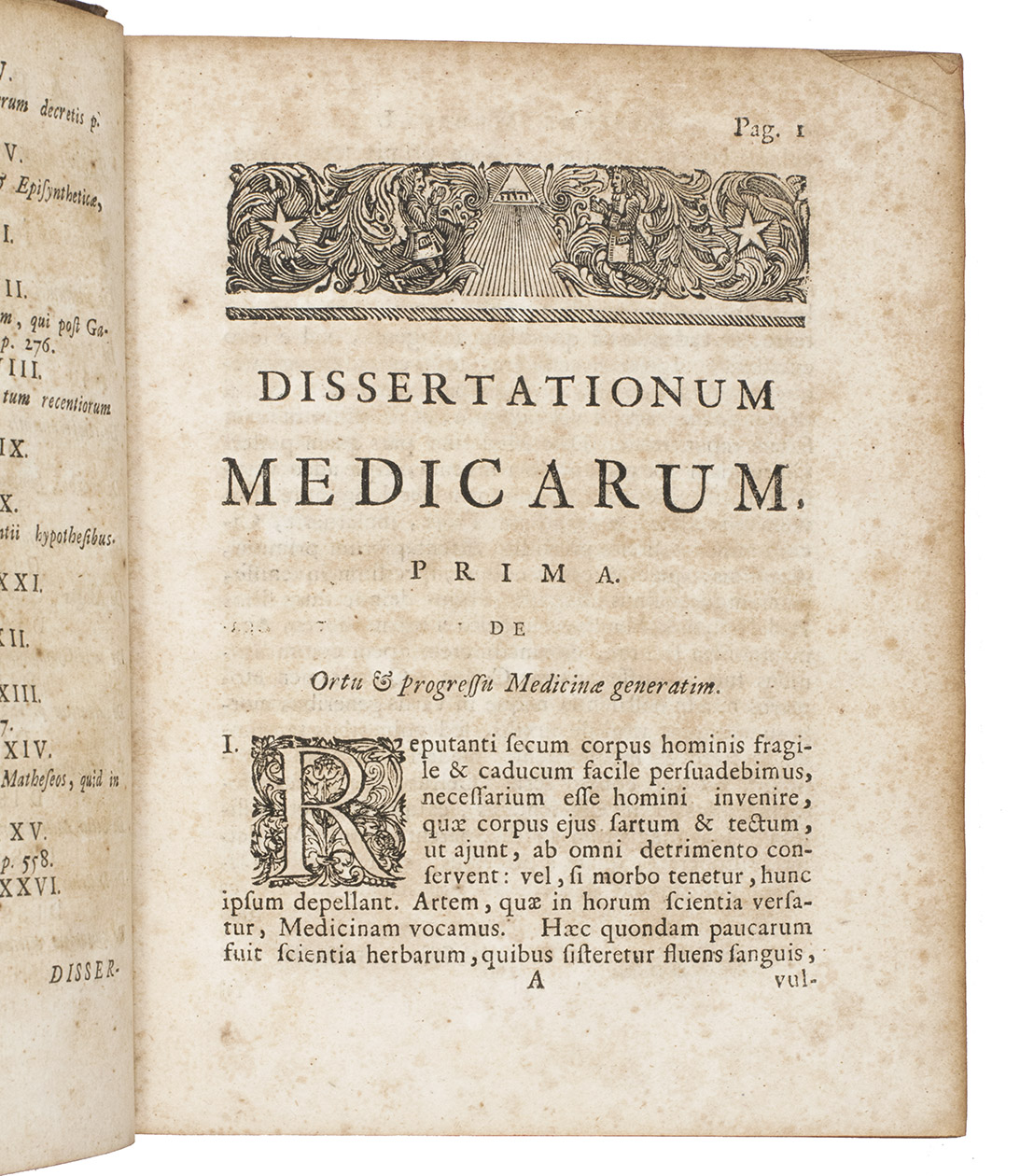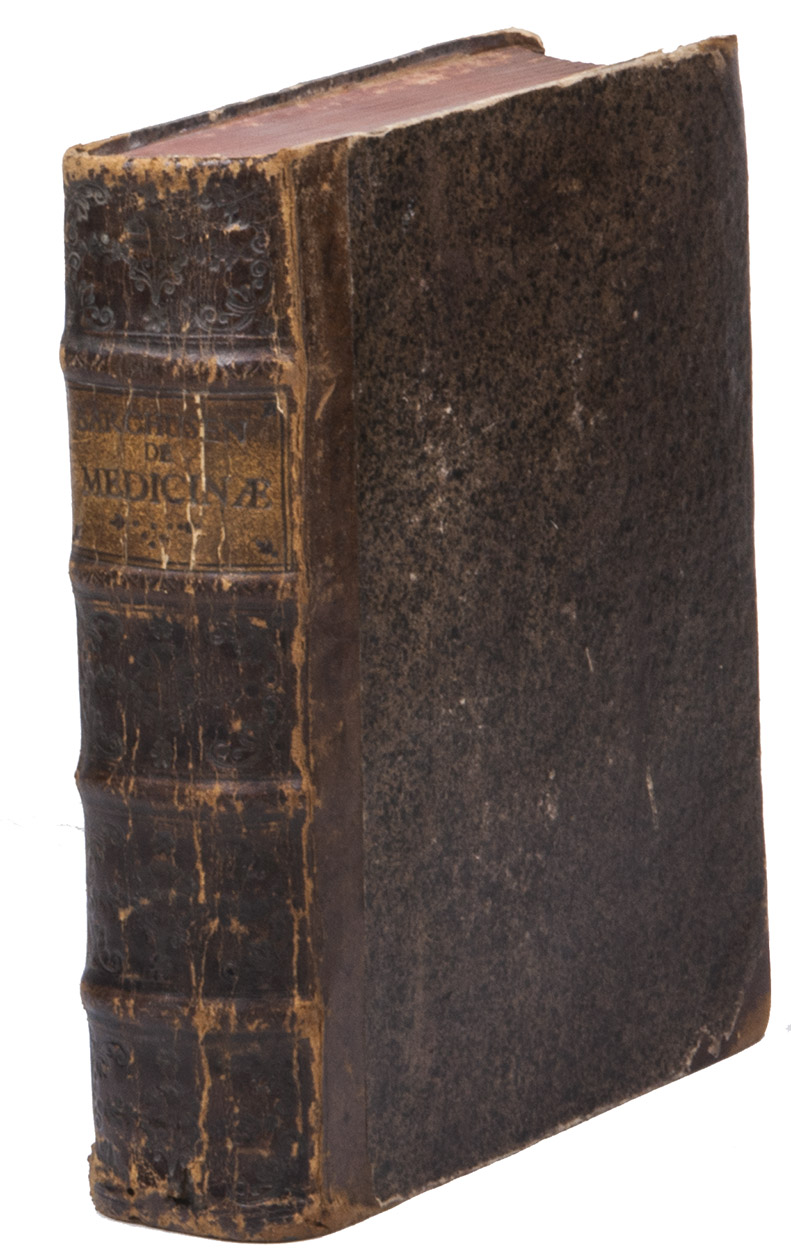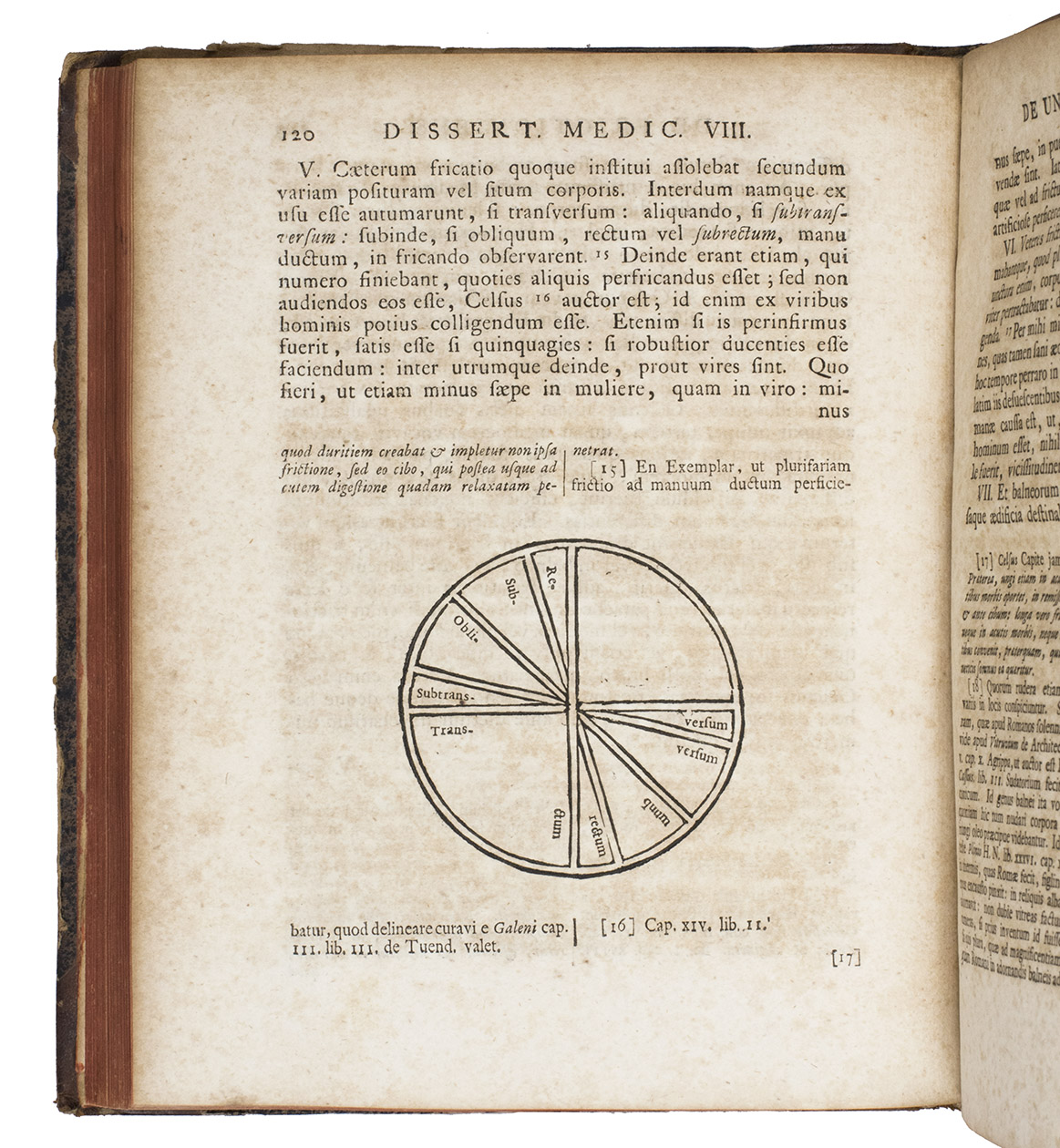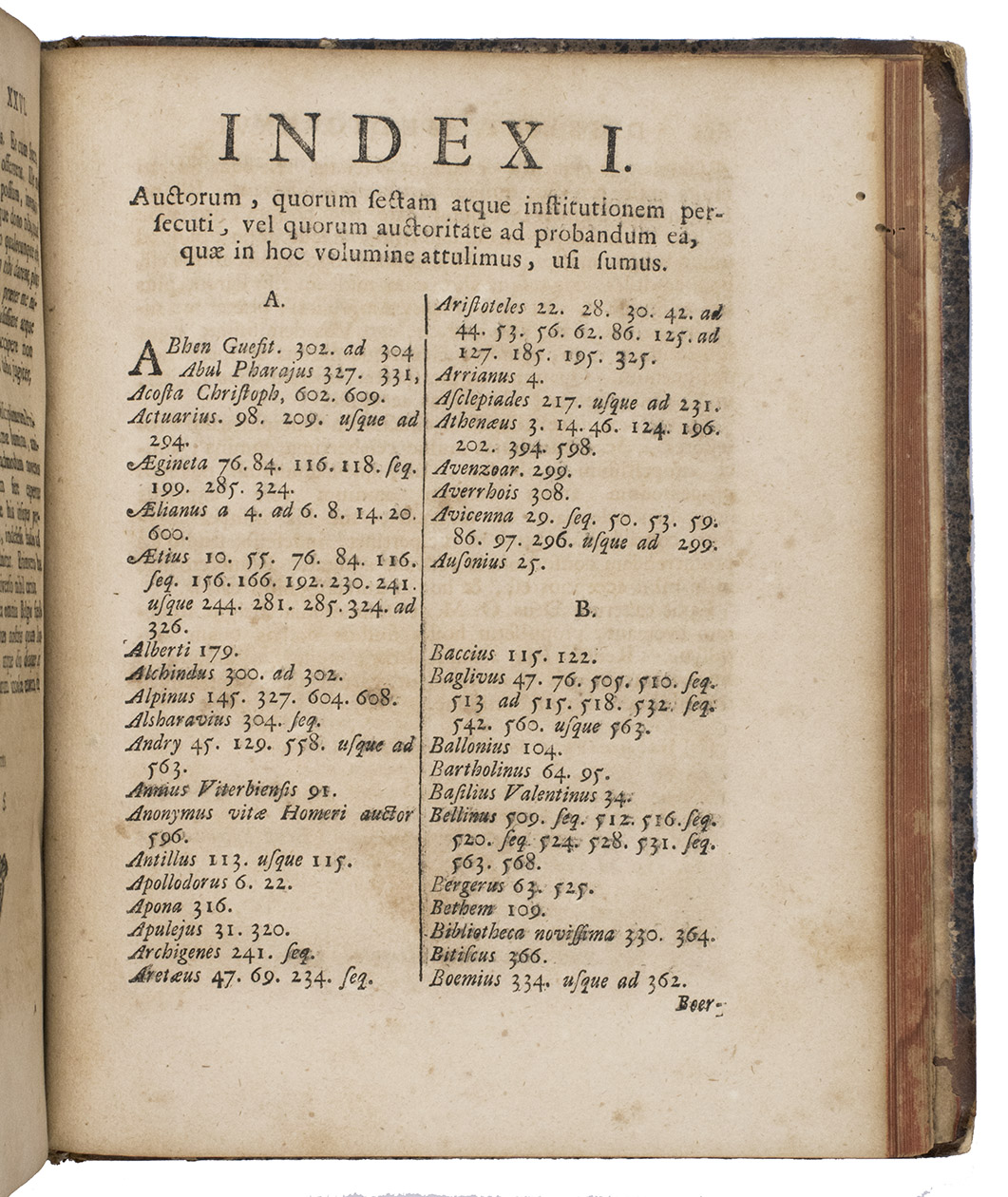BARCHUSEN, Johann Conrad.
De medicinae origine et progressu dissertationes. In quibus medicinorum sectae, institutiones, decreta, hypotheses, praeceptiones, &c. Ab initio medicinae usque ad nostra tempora traduntur.
Utrecht, Gijsbert van Paddenburg and Willem Kroon, 1723. 4to. With the title-page printed in red and black with a small woodcut ornamental vignette, and two woodcut illustrations in the text. Further with some woodcut decorated initials, a large woodcut headpiece at the start of the work, and woodcut ornamental tailpieces throughout. Contemporary half calf, sprinkled paper sides, gold-tooled spine with the title lettered in gold (now faded), red edges. [1], [1 blank], [14], 679, [1] pp.
€ 3,500
Completely revised edition of a collection of 26 texts on the history of medical and chemical theories by an expert on medicine and chemistry, Johann Conrad Barchusen (1666-1723). Among the examined authors are Paracelsus, Crollius, Van Helmont, Fludd, Campanella, and many more. The work includes sections dedicated to Greek, Arabic, Latin, Egyptian, and Asian medical theories and practices, including Chinese acupuncture, both ancient and contemporary.
Barchusen studied pharmacy at several universities, including the universities of Berlin, Mainz, and Vienna. He settled in Utrecht in 1694, and after being awarded an honorary M.D. by the city in 1698, he was appointed extraordinary professor of chemistry in 1703.
Barchusen's work shows his development from a practicing pharmacist to a professor of the new academic discipline of chemistry. His first book Pharmacopoeus synopticus, published in 1690, was a pharmaceutical work. After his arrival in Utrecht, he published three more works on chemistry. Although Barchusen was not a chemist of genius, his activities contributed much to the high level of Dutch academic chemistry from which his illustrious contemporary in Leiden, Herman Boerhaave (1668-1738), emerged as the most influential teacher in the first decades of the 18th century. The first edition of the present work was arranged in dialogue form, which was criticised heavily, together with the poor Latin style. Therefore, in 1723, the present revised edition was published as a respond to these criticisms.
With the spine showing signs of wear, the edges and corners of the boards are slightly rubbed, the gold-tooling on the spine has faded, somewhat browned and foxed throughout, some minor worm holes in the blank outer margin of the last half of the work, not affecting the text. Otherwise in good condition. Blake, p. 99; DSB I, p. 450-1; Ferguson, Bibliotheca Chemica I, p. 72 "an interesting collection of essays"; Neu, Chemical, Medical, and Pharmaceutical Books Printed before 1800 in the collections of the University of Wisconsin Libraries, 230; STCN 203248589 (7 copies); not in Bibl. Med. Neerl.; Cole.
Related Subjects:
